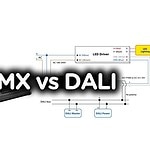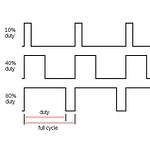Dimming is an innovative and flexible way to control light. Dimming lights is another way to save energy and create different moods. LED lighting is a big part of the lighting market and is expected to improve at dimming.
0-10V dimming is an analog method of dimming lighting fixtures that uses a control voltage signal to adjust the light output from 0 to 100%. The control signal ranges from 0 to 10 volts, where the name 0-10V dimming comes from.
Even though LEDs can be dimmed differently, 0-10V dimming is one of the most common ways to control lighting in commercial and industrial settings. If you’re not sure if 0-10V dimming will work for your project. This blog post will give you the answer.
What Is 0-10V Dimming?
0-10V dimming is a way to control how bright the light is. It works on direct current voltage (DC) between 0 and 10 volts. The easiest way to control lighting is with 0-10V dimming, which allows for smooth operation and dimming down to 10%, 1%, and even 0.1% light level.
At 10 volts, the light will be at its brightest. At 0 volts, the light will dim to its lowest level, but a switch is sometimes needed to turn it off completely.
This easy-to-use lighting control system can be connected to LED lights for various lighting options and moods. Using a 0-10V dimmer, you can create lighting that fits your mood or activity by adjusting the brightness level. For example, making areas like bar and restaurant seating feel more elegant.
History Of 0-10V Dimming
0-10V dimming systems are also called fluorescent dimming systems or five-wire dimming systems. This dimming system was created when large systems needed a flexible way to turn down lights with magnetic and electrical blasts. So, all the lights can be turned down at once without changing anything but the bulbs. At the time, a 0-10V dimming system solved the big companies’ problem.
These 0-10V dimming systems are still used, but as everything else in the world improves, these dimmers are becoming more popular with the newest and best lighting products such as LEDs.
The International Electrotechnical Commission (IEC) standard number 60929 Annex E is why this system is so well-known and widely used. Most companies and engineers agree with this standard.
How Does 0-10V Dimming Work?
LED drivers with 0-10V dimming have a circuit with a purple and gray wire that makes a 10V DC signal. When the two wires are open and don’t touch each other, the signal stays at 10V, and the light is at 100% output level.
When the wires are touching or “shorted” together, the dimming signal is at 0V, and the light is at the lowest level of dimming that the driver has set. 0-10V dimmer switches lower the voltage or “sink” it so the signal can go from 10V to 0V.
Usually, the DC voltage matches the level of dimming of the driver. For example, if the signal is 8V, the light fixture is at 80% output. If the signal is turned down to 0V, the light is at its dimmest level, which could be between 10% and 1%.
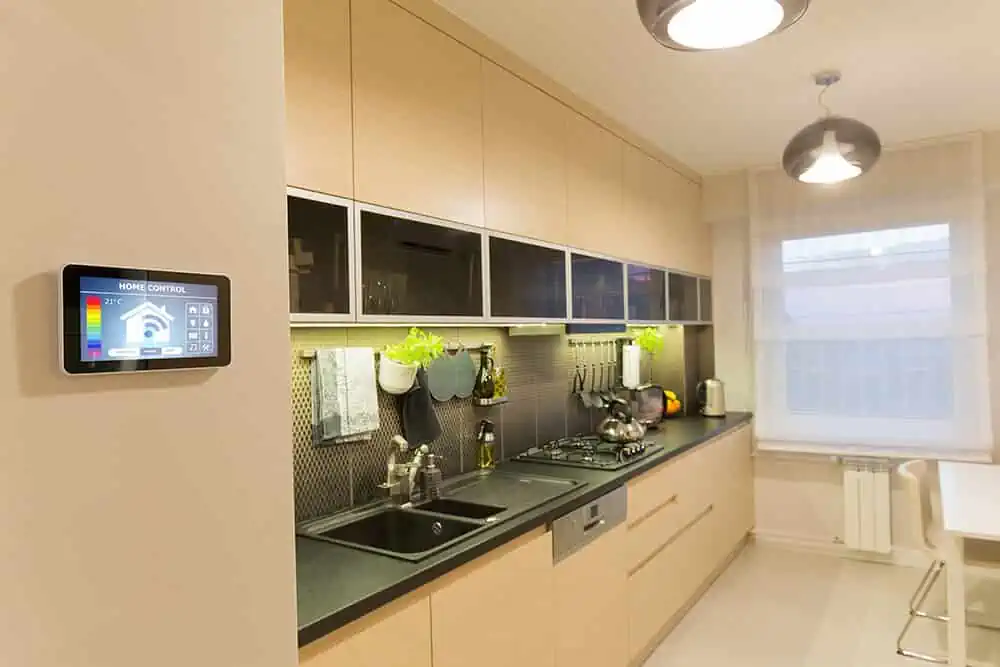
Where To Use A 0-10V Dimmer?
0-10V dimming was made as a standard way to control fluorescent lights with light-dimming ballasts, and it is still often used in this way. With recent improvements in LED technology, 0-10V dimming has become a reliable and widely used way to control how dim LED lights are.
This system can dim LED fixtures in retail stores, office buildings, entertainment venues, theaters, and other commercial spaces. 0-10V dimming can also be used for commercial applications outside that need lighting that can be used for more than one thing. LED high bays, LED flood lights, LED strips, LED neon, and LED retrofit kits, to name a few, can be turned down.
Dimmable fixtures are often chosen for their ability to change the mood, but there are other reasons to use this type of lighting control system.
0-10V Dimming vs. Other Dimming Systems
There are several types of dimming systems available in the lighting industry, each with its own advantages and disadvantages. 0-10V dimming is a simple and widely used analog dimming technology that is compatible with many lighting fixtures and control systems, but has a limited control range and is susceptible to interference and noise. Other dimming technologies, such as DALI, PWM, wireless, TRIAC, and DMX, offer different benefits and drawbacks. For example, DALI provides precise and individual control of each lighting fixture, but can be more complex and expensive to install and operate than other systems. PWM provides flicker-free and efficient dimming for LED lighting applications, but may require special control equipment. Wireless systems offer flexible and easy installation, but may be susceptible to interference and hacking. TRIAC dimming is simple and low-cost, but can produce audible humming or buzzing. DMX provides flexible and programmable control, but requires specialized control equipment and software. A comparison of these different dimming systems can be seen in the table below:
| Dimming System | Advantages | Disadvantages | Typical Applications |
| 0-10V dimming | Simple to install and operate, compatible with many lighting fixtures and control systems | Limited control range, susceptible to interference and noise, requires a dedicated control wire | Simple dimming applications, retrofitting existing lighting systems |
| DALI | Precise and individual control of each lighting fixture, easy to integrate with building management systems | More complex and expensive to install and operate, requires special wiring and control equipment | Large commercial and industrial applications, high-end architectural lighting |
| PWM | Precise and flicker-free dimming, high efficiency, compatible with many LED fixtures | Can be complex to program, limited range of dimming, requires special control equipment | LED lighting applications, including high bay and outdoor lighting |
| Wireless | Flexible and easy to install, can be controlled remotely and programmatically, no wiring required | May be susceptible to interference and hacking, limited range of control | Residential and commercial lighting applications, smart home systems |
| TRIAC | Simple and low-cost, compatible with many lighting fixtures and control systems | Can produce audible humming or buzzing, may not be compatible with all LED fixtures | Residential and commercial lighting applications |
| DMX | Flexible and programmable, compatible with many lighting fixtures and control systems | More complex and expensive to install and operate, requires specialized control equipment and software | Stage lighting, theatrical productions, architectural lighting |

What Do I Need For 0-10V Dimming?
Because of how LEDs work and how some drivers are made, not all LED drivers can be used with 0-10V dimmers. Ensuring your fixture has the right parts for a dimmer to work is essential.
In some cases, all you have to do to make an existing fixture dimmable is switch out the driver. In recent years, LED technology has come a long way, and now most commercial LED fixtures can be dimmed. Once you know if your fixture is compatible, you will need to run low-voltage wiring from the fixture back down to a compatible wall switch.
Are There Recommended Wiring Practices For 0-10v Dimming?
Your fixture’s driver can be a class one or a class two circuit, which means it either has no safety protection warnings or a significant safety protection warning.
When working with a class one circuit, it is important to handle the high-voltage output safely. Because the power is limited, there is no chance of getting an electric shock or starting a fire with a class two circuit driver. However, class one is often the most efficient because it can power more LEDs.
The source (driver) is usually connected to the dimming signal, which has a purple wire for +10 volts and a gray wire for the signal. When neither wire touches the other, the dimmer output will be 10 volts or 100%.
When they touch, the output from the dimmer control will be 0 volts. Its lowest level is 0 volts, and depending on the driver, the fixture will either go into sleep mode, turn off completely, or use a dimmer switch to turn it off.
It is best to keep the distance between the analog control wiring and the driver as short as possible when installing power or analog controls. As the National Electric Code requires, keeping all class two control circuits separate from class two line voltage wiring is essential.
The separation is vital because wiring with a higher voltage can send alternating current voltage to signals with a lower voltage. This can cause unwanted effects and safety problems with dimmed lights.

How To Install A 0-10V Dimming System
Here are the steps to install a 0-10V dimming system:
- Select the right tools: You’ll need a 0-10V dimming driver, a dimmer switch that works with the driver, and LED lights that work with the dimming system.
- Turn the power off: Turn off the power to the circuit you’ll be working on before you start the installation.
- Join the power source and the LED lights to the dimming driver.
- Connect the switch for dimming to the driver for dimming.
- Check to see if the system is working right.
Make sure to follow all the safety rules and instructions with your gear. Best wishes for your installation!
What Are the Benefits Of 0-10v Dimming?
Let’s discuss why you should choose 0-10V dimming and how it will help you.
- It is an advanced technology that works well with LEDs.
- It’s one of the easiest ways to use less electricity because a dimmer will let you control it.
- It will save you money and also extend the life of your LEDs.
- Since you can change its intensity, you can use your lights for multiple purposes. You will need a bright light for a sports field or other outdoor activities and dim light for places like a restaurant.
- It is very well-known on the market because it meets IEC standards.
- It can work well for business activities outside that need to dim the light.
- It works well in living rooms, bedrooms, and kitchens at home, as well as in restaurants, hospitals, warehouses, and offices at Work.
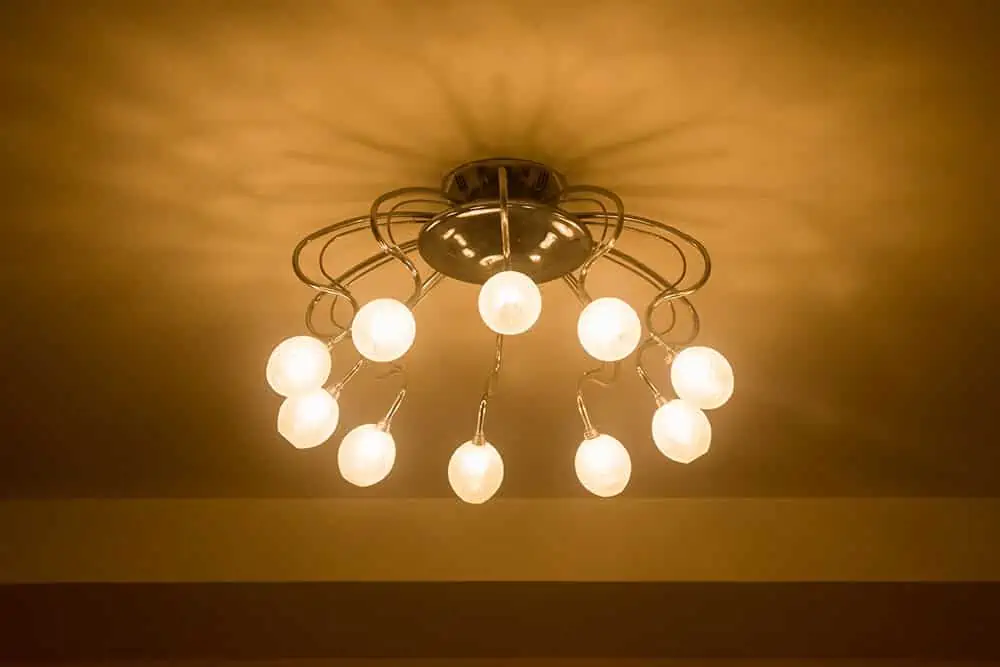
What Are The Limitations Of 0-10V Dimming?
Let’s look at the limitations of this technology because nothing is flawless, and there are both good and bad things about everything.
- The 0-10V dimming system and the primary dimming system are hard to combine.
- Not many companies make 0-10V dimming, so you may find it hard to get a good product.
- The drivers and blasts are what make these dimmers work. So you need the specs and guidelines to understand how these drivers will work.
- Voltage drop is a problem with a 0-10V dimming system. This is because the wires’ resistance makes it so in an analog system.
- When installing 0-10V dimming, the labor and wire costs are higher.
Best Practices For Using 0-10V Dimming Systems
To use the 0-10V dimming system properly, the best practices you should use are
- Use compatible equipment: Use equipment only that works with your 0-10V dimming system. This includes LED lights, dimming drivers, and dimmer switches.
- Follow the wiring diagrams: Wire the system correctly by following the diagrams that come with the equipment. Use the correct wire sizes and connectors to ensure connections are safe and work well.
- Test the system: Before you use it, ensure it works right by testing it. Check that the dimming range is smooth and even and that the lights don’t buzz or flicker.
- Use appropriate loads: Only use loads that are right for the dimming system. Don’t put too much load on the system, like too many lights or a big load.
- Control voltage drop: Keep an eye on voltage drops, which can happen over long distances or when using multiple loads. Use the proper wire sizes and follow the instructions in the equipment manual or from the manufacturer.
Using these best practices, you can ensure your 0-10V dimming system is safe, reliable, and meets your needs.
Troubleshooting 0-10V Dimming Systems
0-10V is easy to troubleshoot compared to other ways of dimming, let’s take a look at various issues that may appear with 0-10V dimming and how you can fix it.
- Driver And Dimmer Issues
If the light fixture doesn’t work well with a dimmer, the dimmer or driver may be broken. First, make sure the driver functions as it should. The dimmer and LED driver are connected by two low-voltage control wires.
Take the wires out of the circuit and briefly touch two of them together. If the light goes down to the lowest brightness level, the driver is fine, and there may be a problem with the dimmer or the wires. If not, the driver isn’t working how it should. You could fix the problem if you changed the driver.
- Noise Due To Wires Issues
If the light fixture makes noise when you turn it up or down, pay attention to the wires. The AC power cables near the 0-10V DC wires may be making noise. A dimming fault will also happen if the wires aren’t correctly positioned.
The problem could be caused by the fact that the 0-10V DC wires are near AC wires or are put in the same conduit as AC wires. The noise is often a sign that the installation was wrong, so we should check to see if the light-dimming system works properly after the first installation.
- Improper Dimming Range
Not all 0-10V dimmers can give drivers the full range of 0-10V because some dimmers may not be compatible with drivers. Make sure the dimmer works with the driver by looking at the lists of compatible dimmers that the driver manufacturers and the light fixture have made.
When you connect 0-10V dimmers to a 1-10V driver, flickering, stuttering, and flashing will happen in low dimming control. The problems are easier to see when the on-off setting is used. The light fixture can’t be turned off entirely without cutting power.
Adding 0-10V dimming to a lighting system can change the light intensity, and less energy is used.
Future of 0-10v dimming
0-10V dimming is a method that has been around for a long time, and it has been a reliable and cost-effective way to change the brightness of light fixtures for many years. But what will happen to it?
As the lighting industry has grown, new control methods have emerged. Voice-activated systems, Bluetooth, and wireless controls have all caught the attention of both designers and users. Still, these new technologies can be hard to use and expensive and may not be helpful in all situations.
Even though these new technologies are becoming more popular, 0-10V dimming is likely to still be used. Many lighting companies still make fixtures that work with this method, and it’s still a simple and reliable way to control the amount of light.
Even though the lighting industry may continue to change, 0-10V dimming will likely be a useful and inexpensive option for many uses.

FAQs
The main difference between 1-10V and 0-10V dimming is the current direction. 1-10V can DIM the load down to 10%, while the 0-10V can DIM the load down to 0% (DIM to OFF) (DIM to OFF). A 0-10V dimmer is a 4-wire device that takes an AC power signal and turns it into a DC 0-10V dimming signal based on the user input.
At the moment, gray and violet wires are used to connect luminaires, drivers, and devices that use 0-10V dimming. A pink wire will replace the gray wire as part of a new color-coding standard.
1. Dimming of electrical potential (decrease in power): phase control.
2. Dimming of the analog control signal: 0-10V and 1-10V.
3. Dimming of the control signal (digital): DALI.
A single switch on a 0-10V system can easily handle thousands of watts.
When you turn down the lights, you block the flow of electricity to the bulb with a “resistor.” When you turn the switch, the resistance increases, so less electricity flows through the bulb.
Choose a dimmer whose wattage rating is equal to or higher than the total wattage of the light bulbs it will control. For example, if the dimmer controls a fixture with ten 75-watt bulbs, you need a dimmer rated for 750 watts or more.
You shouldn’t put a light that can’t be dimmed into a circuit that can because it could hurt the light or the circuit.
If you want to dim your device and it needs 0-10V dimming, but your dimmer doesn’t have those two wires, DO NOT hook it up. Your device will not dim.
0-10V dimming is a way to control how bright the light is. It works on direct current voltage (DC) between 0 and 10 volts.
With 0-10v, the same command will be sent to every fixture in the group. With DALI, two devices can talk to each other back and forth.
0-10V is analog.
0-10V is an analog lighting control protocol. A 0-10V control applies a voltage between 0 and 10 volts DC to produce a varying intensity level. There are two existing 0-10V standards, and they don’t work with each other, so it’s very important to know which type is needed.
Yes. The more an LED uses energy, the brighter it is. Therefore a dimmed LED uses less energy than an identical LED running at full brightness.
White is inherently bright and reflects light like no other, so white is best for brightness.
There are two ways to dim lights: low-voltage dimming and mains dimming. Most of the time, LEDs with built-in drivers are dimmed with mains dimming, but LEDs with compatible external drivers can also be dimmed with mains dimming.
0-10V dimming is a type of dimming system that uses a control signal of 0-10 volts DC to dim lights. It’s commonly used in commercial and industrial lighting applications.
A 0-10V dimming system sends a control signal to the driver of a lighting fixture, which adjusts the current to the LED or fluorescent lamp to adjust the light output.
Benefits of 0-10V dimming include increased energy efficiency, longer bulb life, and the ability to create different lighting scenes.
0-10V dimming can be used with LED and fluorescent lighting fixtures.
Yes, 0-10V dimming can be retrofitted to existing lighting fixtures with the use of a dimming controller.
The number of lights that can be controlled with 0-10V dimming depends on the driver capacity and the maximum load of the dimmer switch.
Common issues with 0-10V dimming include flickering lights, inconsistent dimming levels, and compatibility issues between different components.
Troubleshooting 0-10V dimming issues can involve checking connections, adjusting settings, and testing components.
PWM dimming uses a pulse-width modulation signal to dim lights, while 0-10V dimming uses a DC control signal.
Yes, 0-10V dimming can be integrated with smart home systems using compatible dimming controllers and smart home hubs.
Summary
So, now you have a better understanding of what 0-10V dimming is! It is a way to control the brightness of a light fixture by sending a low-voltage signal. This dimming method has been used for many years in the lighting industry because it is simple and reliable.
0-10V dimming is excellent because it works with many different types of lighting, such as LED, fluorescent, and incandescent lighting. It can be used anywhere, from small residential projects to large commercial installations.
If you’re looking for a cost-effective solution for controlling the brightness of your lighting, then 0-10V dimming might be the way to go. Setting up and keeping up is relatively cheap compared to other ways to dim lights. It’s also easy to install, which makes it an excellent choice for upgrading lighting systems that are already in place.
Overall, 0-10V dimming is a tried-and-true way to control how bright a light is, and the lighting industry still uses it a lot. So, the next time you plan a lighting project, keep 0-10V dimming in mind as a reliable and cost-effective option.
LEDYi manufactures high-quality LED strips and LED neon flex. All of our products go through high-tech laboratories to ensure the utmost quality. Besides, we offer customizable options on our LED strips and neon flex. So, for premium LED strip and LED neon flex, contact LEDYi ASAP!



